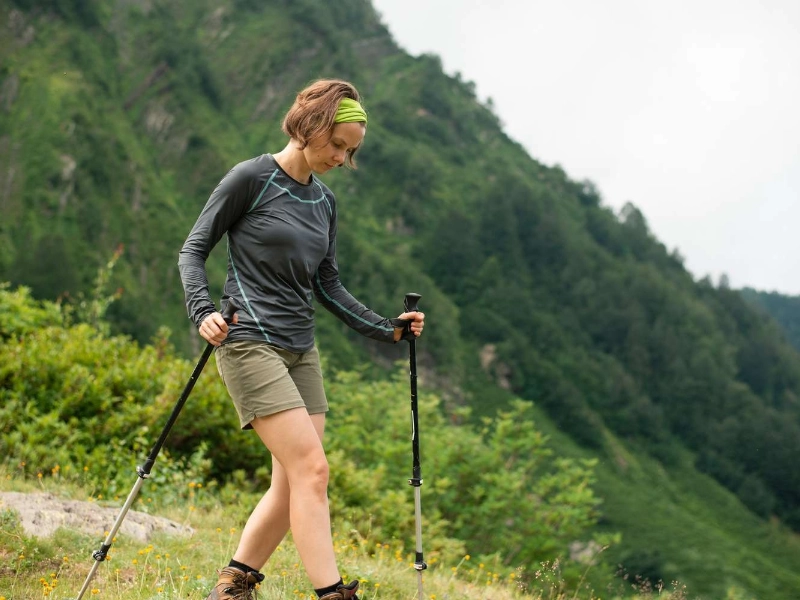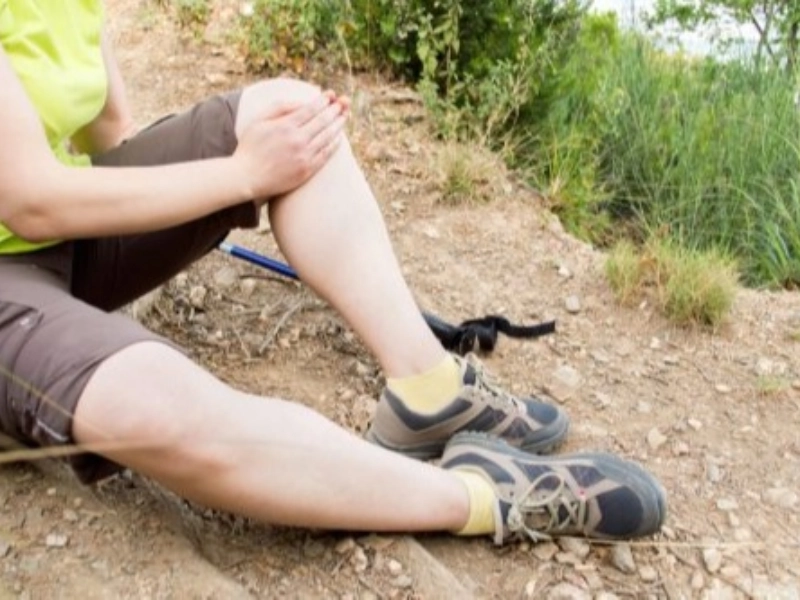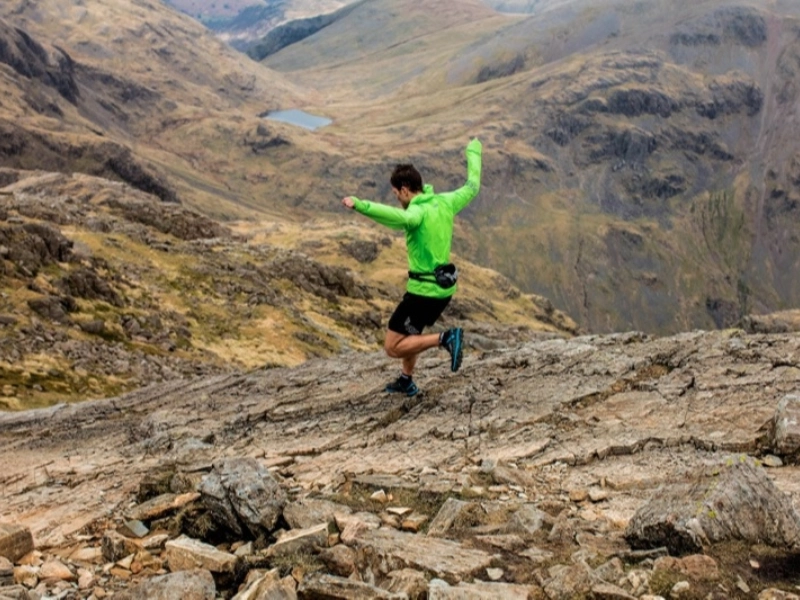Many hikers find it challenging to walk downhill since they are continually applying a lot of strain to their knees. The cartilage may get irritated by this pressure, resulting in sore muscles. Your quads contract eccentrically to control your movement while you go downhill. Your muscles will suffer from this, particularly if they aren't strong enough to hold you up.

 On steep climbs, taking long, loping strides might wear you out and make you lose your balance. Injuries may potentially result from it. Instead of driving your feet too forcefully into the ground, concentrate on taking small, rapid steps.
Walking downhill puts more strain on your hip rotators and calf muscles in particular and requires more impact than walking on level ground. These muscles can contract in two different ways: eccentrically, which slows down your motion, and concentrically, which shortens the muscle. Even while these eccentric contractions can make you feel exhausted the day following your hillwalk, they are crucial for strengthening these muscles as a whole.
Try incorporating some uphill intervals into your exercises if you tend to overstride in order to assist you develop the ability to make contact with the ground underneath your centre of gravity. To avoid overstriding, you can also include exercises that build your calves and quadriceps. Squats and Bulgarian split squats, for instance, can teach you how to plant the ball of your foot on the ground.
On steep climbs, taking long, loping strides might wear you out and make you lose your balance. Injuries may potentially result from it. Instead of driving your feet too forcefully into the ground, concentrate on taking small, rapid steps.
Walking downhill puts more strain on your hip rotators and calf muscles in particular and requires more impact than walking on level ground. These muscles can contract in two different ways: eccentrically, which slows down your motion, and concentrically, which shortens the muscle. Even while these eccentric contractions can make you feel exhausted the day following your hillwalk, they are crucial for strengthening these muscles as a whole.
Try incorporating some uphill intervals into your exercises if you tend to overstride in order to assist you develop the ability to make contact with the ground underneath your centre of gravity. To avoid overstriding, you can also include exercises that build your calves and quadriceps. Squats and Bulgarian split squats, for instance, can teach you how to plant the ball of your foot on the ground.
 Although walking downhill uses less energy than walking uphill, the knee strain caused by the downhill angle can be greater. Higher rates of joint pain and damage result from this, especially among younger hikers.
It is crucial to avoid bending backwards when trekking downhill in order to lessen this effect. By doing this, you shift your centre of gravity backward and apply more braking force with each stride. It also makes it more likely that you will slip and injure your knees.
Richards suggests that in order to reduce the braking effect and maximise the ability of your muscles to cushion the impact, you should always maintain a tiny bend in your knees at the point of impact. In order to lessen the steepness of the slope and improve stability, he also recommends zigzagging downhill.
Using trekking poles is an additional choice that can improve stability and aid in weight distribution. To avoid your trekking poles rubbing on your kneecaps, ensure sure the points are pointed forward when using them.
Although walking downhill uses less energy than walking uphill, the knee strain caused by the downhill angle can be greater. Higher rates of joint pain and damage result from this, especially among younger hikers.
It is crucial to avoid bending backwards when trekking downhill in order to lessen this effect. By doing this, you shift your centre of gravity backward and apply more braking force with each stride. It also makes it more likely that you will slip and injure your knees.
Richards suggests that in order to reduce the braking effect and maximise the ability of your muscles to cushion the impact, you should always maintain a tiny bend in your knees at the point of impact. In order to lessen the steepness of the slope and improve stability, he also recommends zigzagging downhill.
Using trekking poles is an additional choice that can improve stability and aid in weight distribution. To avoid your trekking poles rubbing on your kneecaps, ensure sure the points are pointed forward when using them.
 Even though it doesn't feel like much work to walk downhill, your gait can have a big influence on your knees and muscles. Focus on planting each foot to manage your pace instead of lengthening your stride, which causes you to brake. Your quadriceps will need to exert a lot of control because they will be extending with every step.
Walking downhill puts your kneecap under more strain, increasing your chance of developing chondromalacia patellae, or wear and tear on the cartilage beneath your kneecap. Your knees may become painful, rigid, and unstable as a result of this ailment.
To ensure that you can gaze forward when walking downhill, keep your shoulders relaxed and your chin up. This relieves tension in your neck and back. The good news is that correct posture becomes second nature once you develop the practice. It's beneficial to dedicate some time at the start of your walk to practicing proper posture, and then to check in on it on a regular basis until it becomes second nature.
Even though it doesn't feel like much work to walk downhill, your gait can have a big influence on your knees and muscles. Focus on planting each foot to manage your pace instead of lengthening your stride, which causes you to brake. Your quadriceps will need to exert a lot of control because they will be extending with every step.
Walking downhill puts your kneecap under more strain, increasing your chance of developing chondromalacia patellae, or wear and tear on the cartilage beneath your kneecap. Your knees may become painful, rigid, and unstable as a result of this ailment.
To ensure that you can gaze forward when walking downhill, keep your shoulders relaxed and your chin up. This relieves tension in your neck and back. The good news is that correct posture becomes second nature once you develop the practice. It's beneficial to dedicate some time at the start of your walk to practicing proper posture, and then to check in on it on a regular basis until it becomes second nature.